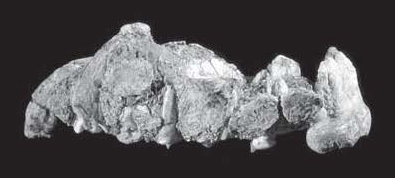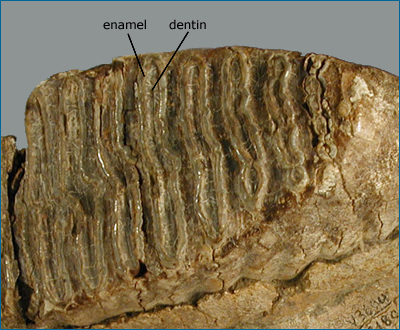We know every detail of the bumps and ridges on each molar belonging to Ardipithecus ramidus — but we can’t yet answer much more basic questions about how A. ramidus walked or what it looked like. Why? Well, quite simply, it’s hard to destroy a tooth: tooth enamel is 98% inorganic — more like a rock than like living tissue — and so teeth fossilize much better than flesh or even bone. As with our knowledge of many extinct animals, much of what we know so far about A. ramidus comes from its teeth. In fact, some extinct species are known only from their teeth.

Lucky for paleontologists and anthropologists, teeth reveal a surprising amount about how an organism lived. For example, mammals secrete enamel in distinct layers on a daily basis, meaning that every adult tooth contains within itself a complete record of how it was formed — and fossil teeth are no exception. By cutting through a single fossilized primate tooth we can chart the formation of the tooth as the animal grew. And because traumatic events affect the rate of enamel secretion, we can even study the timing of events, like birth, within a single tooth.

The shape and size of fossil teeth often preserve information about primate social structure. Big canines, for example, usually mean that the animals competed socially with one another using threats. Primates with long skinny incisors, on the other hand, probably used them cooperatively for combing through each others’ fur.

And of course, teeth divulge much about what an animal ate. Thick enamel protects against wear and suggests a diet of hard and abrasive foods. For example, humans today have round bumps on our molars coated in thick enamel — which works well for our varied diet — and keeps us from breaking a tooth on un-popped kernels at the bottom of the popcorn bucket! Chimpanzees, on the other hand, mainly eat fruit and have much thinner enamel. Some herbivores that constantly grind tough plant material, such as horses and elephants, have teeth comprised of alternating layers of enamel and the softer material dentin arranged in stripes so that as they chew, the dentin stripes wear down faster — always leaving them with sharp ridges of enamel for grinding up their next meal.

